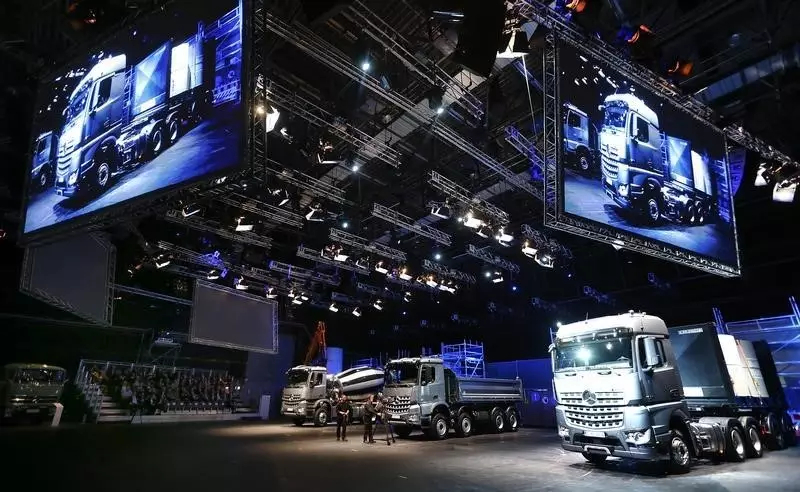Daimler Truck’s recent third-quarter financial reporting has showcased a dynamic mix of achievements and challenges, sparking interest among investors and analysts alike. The company announced an industrial adjusted EBIT of €1.15 billion, equating to a robust margin of 9.3%. This figure exceeded market predictions by 5.6%, reflecting an unexpectedly strong performance across various segments, notably Mercedes-Benz, Trucks Asia, and Buses. However, these results were clouded by ongoing worries regarding margins specifically within Daimler Trucks North America (DTNA). Investors are left pondering how these headwinds may impact the forthcoming quarter’s financial outcomes.
Mercedes-Benz emerged as a key performer in Daimler Truck’s Q3 results. The division reported €4.4 billion in revenue, which surpassed expectations by around 4.7%. With an adjusted EBIT of €283 million, equating to a 6.4% margin, the brand has successfully cleared a critical investor benchmark that had been set at 6%. This significant achievement is noteworthy, particularly when considering the broader context of profitability concerns within the automotive sector. Moreover, Mercedes-Benz’s sharp increase in research and development capitalization—rising to 32% compared to just 11% last year—signals a potential shift in strategy. While beneficial for current margins, this transformation indicates a need for close monitoring to understand its long-term implications for cost structures.
Conversely, the performance of DTNA represented a more complex narrative, marked by both successes and shortcomings. Revenue figures were aligned with predictions, yet the adjusted EBIT fell short of market consensus—approximately 6% lower than expected. The margin of 12.1% did not meet the anticipated 12.7%, a discrepancy that traders are keenly scrutinizing. Analysts have pointed out that the company’s shift toward a product mix favoring medium-duty and vocational vehicles, as opposed to the more lucrative heavy-duty and on-highway options, has been a significant factor in straining margins. This evolving product strategy draws concerns about DTNA’s future profitability, especially as signs indicate that these issues may persist into the fourth quarter.
With orders totaling 94,709 units—slightly below expectations of 95,569—there is a palpable sense of caution surrounding DTG’s performance indicators. Furthermore, industrial free cash flow was reported at a disappointing negative €41 million, significantly short of the anticipated positive €118 million. The company attributes this cash flow shortfall to increased working capital needs, significantly influenced by ongoing supply chain issues and elevated inventory levels. Despite these challenges, Daimler Truck has reaffirmed its full-year free cash flow guidance, suggesting a level of optimism about finishing the year on stable ground.
While Daimler Truck’s Q3 results reveal impressive revenues and performance in key segments, the underlying issues—especially within DTNA—highlight the necessity for strategic reassessments. As the company navigates these complexities, investors will be closely monitoring how these trends develop in the upcoming quarters. The balance between maintaining robust performance while addressing emerging challenges will be crucial for Daimler Truck’s continued success and investor confidence.

